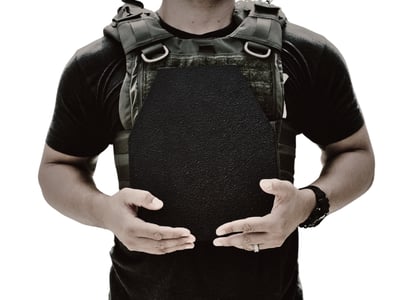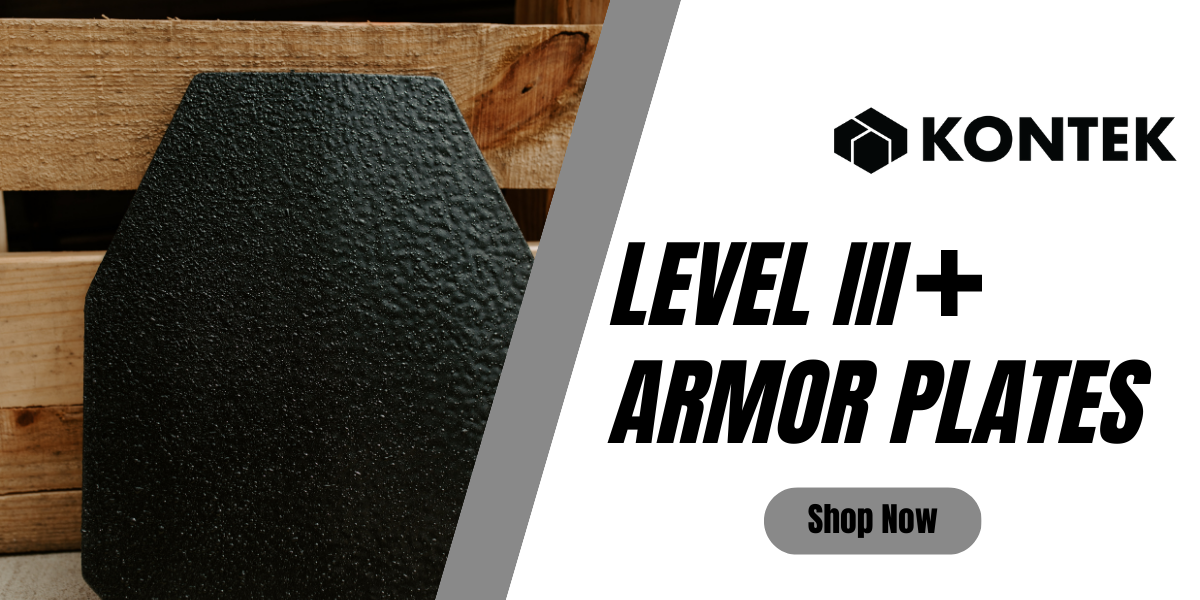
What really makes an armor plate bulletproof?
It’s not just the thickness or the shape. It’s the science and materials behind it. Whether you’re looking at steel, ceramic, or polymer-based plates, each one stops bullets in a different way.
This blog breaks down how bulletproof armor plates actually work, what they’re made of, and how to understand their limits so you can make a more informed choice.
How Bulletproof Body Armor Works
When a bullet strikes an armor plate, the goal isn’t to “block” it like a shield in a movie. It’s to absorb and dissipate the bullet’s energy in a way that reduces or prevents penetration and minimizes trauma to the person wearing it.
Hard armor plates, unlike soft body armor designed for handguns, are built to handle rifle rounds and higher velocity threats. They achieve this by using dense materials that either fracture the projectile, spread the impact, or trap the round entirely.
Some materials are designed to shatter under impact (like ceramic), while others deform or compress to absorb the energy (like polyethylene). In many cases, multiple layers of material work together to stop a bullet and prevent backface deformation. This dangerous blunt trauma can still cause serious injury even if a round doesn’t penetrate.
The bottom line? Bullet resistance is about energy management, and the right armor plate is the one that does this effectively against the specific threats you face.
What Armor Plates Are Made Of
The material inside an armor plate determines how it performs and how it feels to wear.
Let’s look at the most common materials used in modern armor plates:
Steel Armor Plates
Steel is a tried and true option. It’s known for its durability, affordability, and ability to handle multiple hits. These plates are usually rated at NIJ Level III or III+, meaning they can stop most common rifle rounds.
But there are tradeoffs. Steel is heavy and can cause fatigue during long wear. Without proper coatings, it also carries the risk of spalling, where fragments break off on impact and cause secondary injuries.
Still, for cost-conscious users who want reliable multi-hit protection, steel plates remain a popular choice.
Ceramic Armor Plates
Ceramic sounds fragile, but it’s one of the most effective materials for stopping bullets. These plates are designed to shatter on impact, dispersing the energy of a round across the surface. Beneath the ceramic layer, a composite backer (often made of polyethylene or aramid) catches the rest of the force.
Ceramic plates are lighter than steel and can stop armor-piercing rounds (Level IV), but they’re more fragile and often lose effectiveness after a significant hit. They’re ideal when mobility and high protection are both priorities.
Polyethylene (UHMWPE) Armor Plates
Polyethylene plates are made from ultra-high molecular weight plastic fibers compressed under heat and pressure. The result is a highly lightweight plate that relies on friction and deformation to stop incoming rounds.
UHMWPE plates often float in water and don’t rust, making them great for marine or humid environments. However, they can be sensitive to heat and are typically thicker than steel or ceramic at the same protection level.
Hybrid and Composite Plates
Many modern armor plates combine multiple materials for a more balanced approach. You might see ceramic front faces paired with polyethylene backers, or layered steel and composite hybrids.
These setups aim to optimize weight, comfort, and protection, especially when users need a plate that performs across various threat profiles. They’re often found in military and tactical law enforcement applications.
Understanding the Limits of Armor Plates
Not all armor plates are created equal, and no plate is invincible. That’s where NIJ certification comes in.
The National Institute of Justice (NIJ) sets the standards for ballistic protection in the U.S., and its rating system helps define what a plate is tested to stop.
- Level III: Stops 7.62x51mm NATO rounds (FMJ)
- Level III+: Not an official NIJ designation, but commonly used by manufacturers for plates tested against faster or steel core rounds like 5.56 M855 (green tip)
- Level IV: Designed to stop armor-piercing .30 caliber rounds
These tests are performed in controlled conditions with specific ammunition. In the real world, performance can vary based on shot placement, angle, repeated hits, and environmental factors. That’s why it’s critical to match the material and rating to your threat level, not just the label on the spec sheet.
It’s also worth knowing that most plates are single hit tested, especially ceramic ones. If your mission demands multi-hit protection, that should guide your material selection.
Contact Kontek Industries
If you need an affordable NIJ-certified plate for an active shooter response kit, for an emergency responder kit, or if you are looking for a certified plate at a great price point, the Raider line of armor from Kontek will meet your mission needs. Kontek’s Raider plate set includes NIJ-III certified and NIJ-III+ tested ballistic plates for body armor that are best suited for law enforcement, security, and civilian markets.



